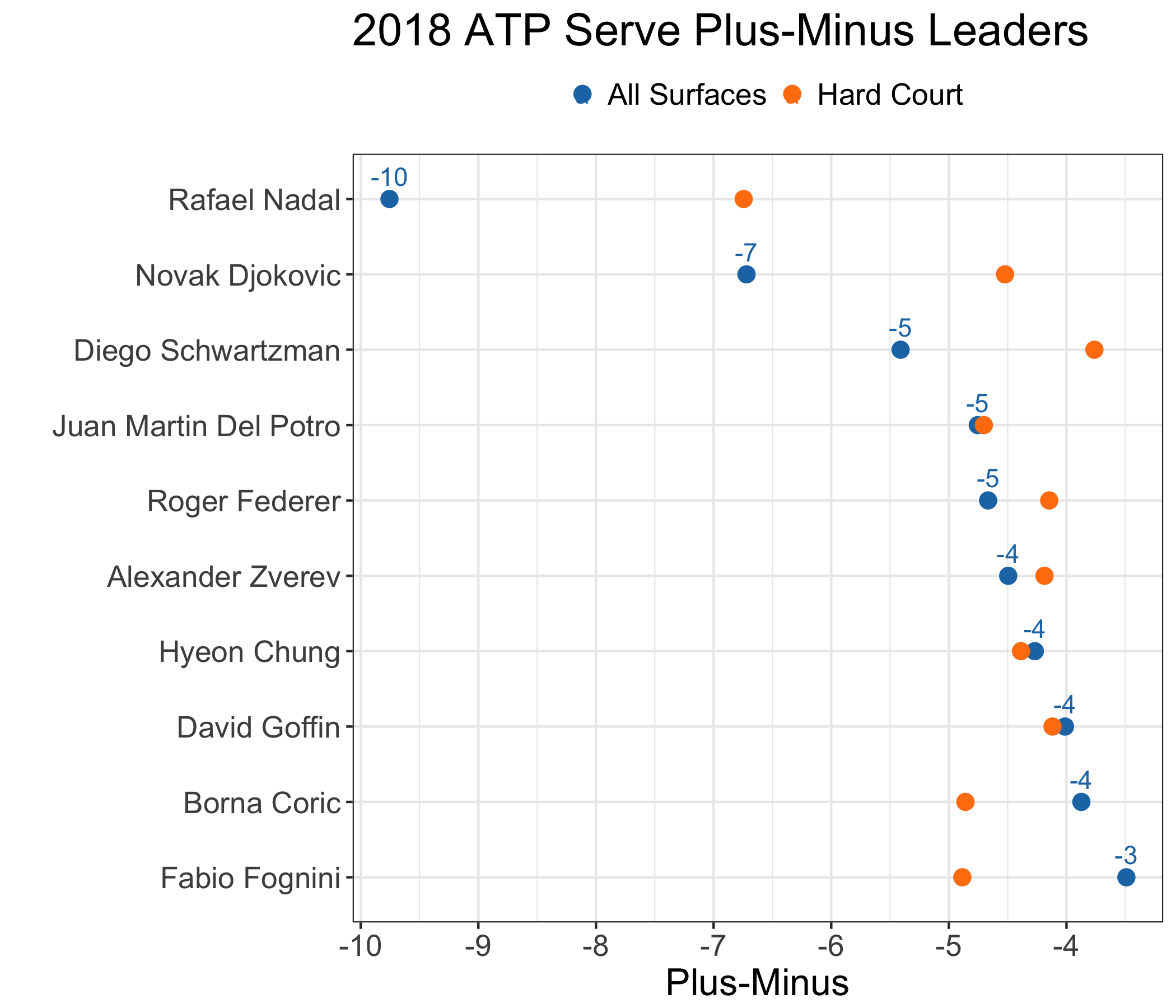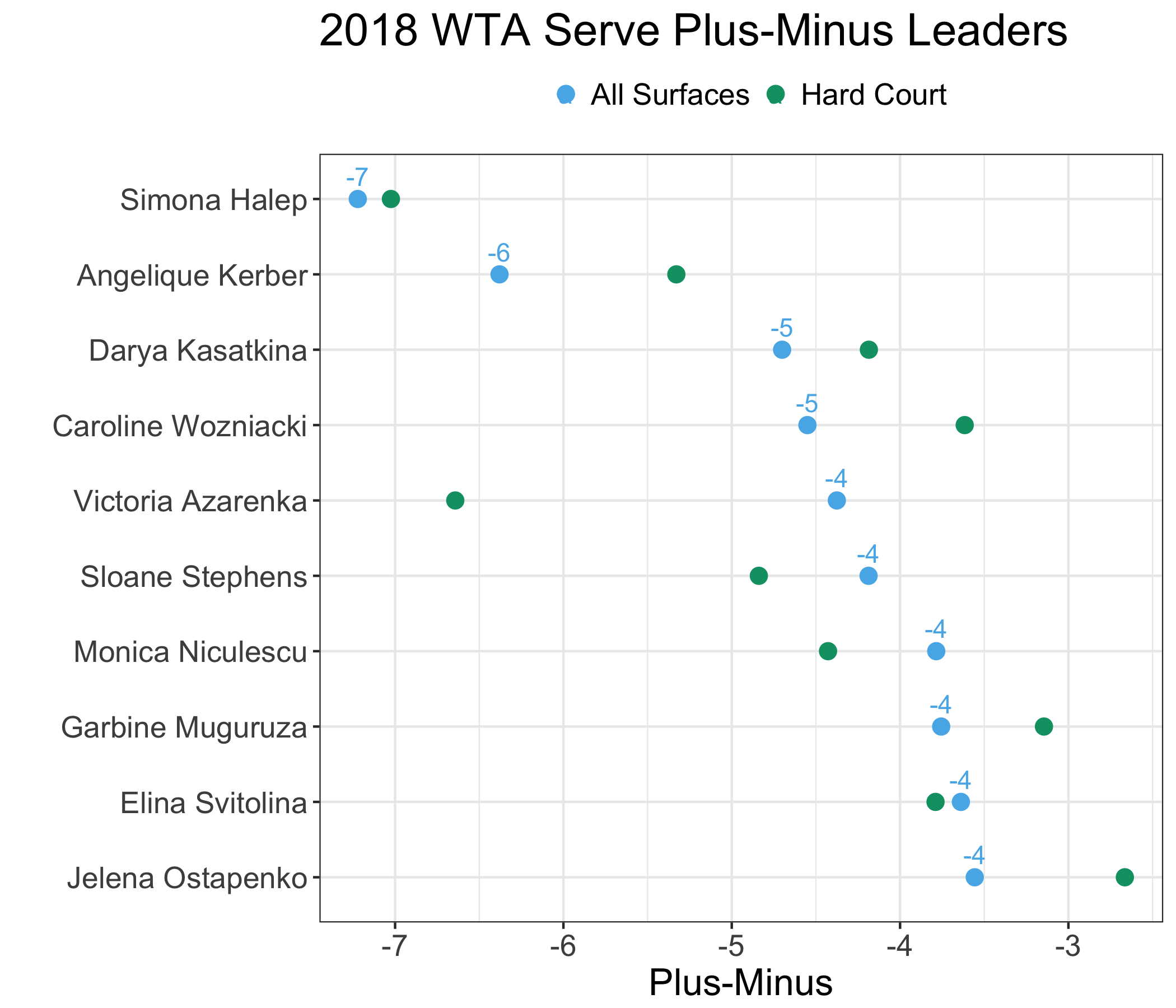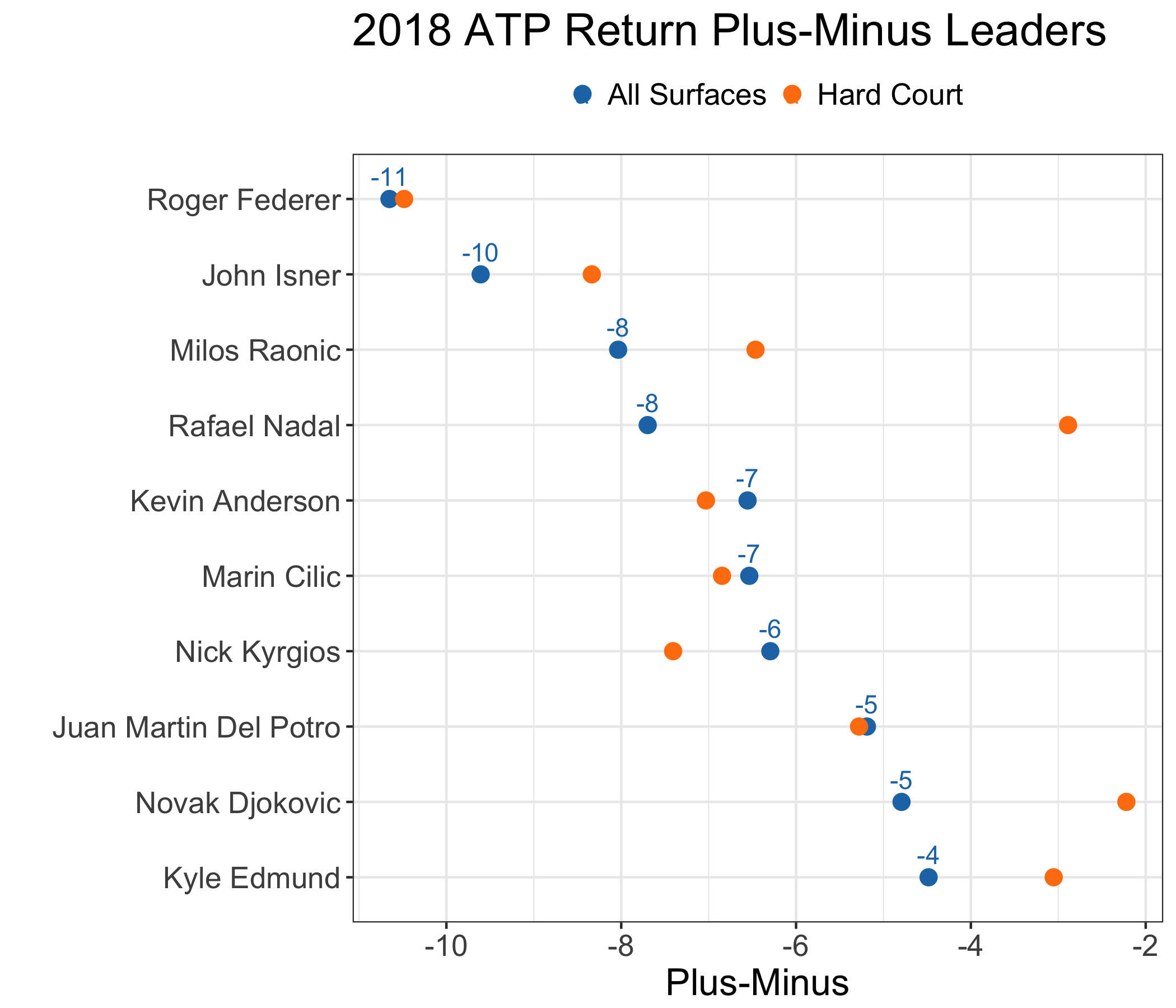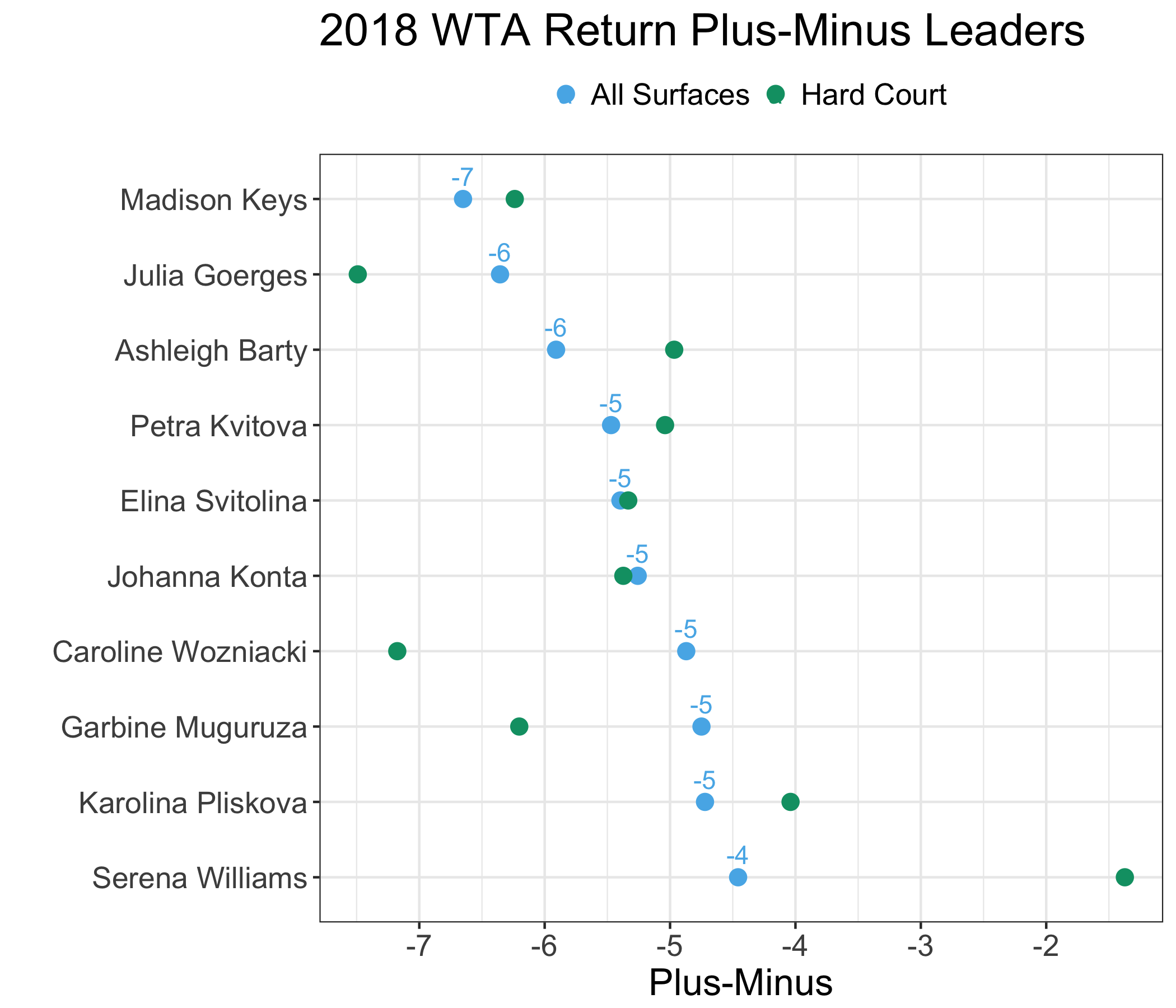Plus-Minus Statistics for Tennis
Plus-Minus doesn’t have to be a stat for team sports only. This post introduces Plus-Minus for tennis and uses it to rank the leaders on serve and return heading into the US Open.
When it comes to ‘analytics’ in sport, it often seems like team sports are having all the fun. Plus-minus is a perfect example. Plus-minus stats are an attempt to measure an individual player’s contribution, a fundamental challenge of performance analysis in team sports.
The idea behind plus-minus is a simple one. If we want to know how one player impacts their team, contrast how the team does with and without the player under otherwise similar situations. For example, at +14 LeBron James had the highest Box Plus-Minus (the estimated points added per 100 possessions) of any player during the 2018 NBA Playoffs, making a strong case that The King was denied the MVP crown.
Although singles tennis doesn’t have a team, it is still very much concerned with impact. Namely, the impact a player has on their opponent’s game. This leads to a ‘plus-minus’ that measures how much a player affects the performance of their opponent.
To put it in mathematical terms, suppose that an opponent $A$ has an average on some performance stat of interest of $\theta_A$. Now say that when they face player $B$ they have an average of $theta_B$. Then the player’s plus-minus is
$$ \mbox{Plus-Minus}_B = \theta_A - \theta_B. $$
We can extend that idea over all opponents a player faces to get their typical impact. We also want to add in some shrinkage to the mean impact for cases where the sample of match stats we have for a particular player is small.
Serve Plus-Minus
With the US Open main draw starting in a matter of hours, it is interesting to see who are the current tour Plus-Minus leaders on serve and return.
In terms of impact on serve, Rafael Nadal leads the ATP Tour as the most fierce defender (note that negative impacts indicate stronger return skills). When Nadal is on the other side of the serve, he is expected to drop his opponent’s serve percentage by 10 points. At Flushing, that expectation will be closer to 7, which still puts Nadal ahead of other top players in the draw.
Even with some bumps during the season, Djokovic takes the second place in stronger serve impact, which is another reason to give Djokovic a strong chance for a second Grand Slam title before the year is up.

Simona Halep is the opponent no women’s server is going to want to face in New York. Unlike Nadal, Halep’s hard court impact is essentially as strong as on any other surface. Angelique Kerber is also well ahead of the back, which should be a reminder that she can’t be counted out as a top pick for the US Open title.
The others in the top 10, including youngsters Darya Kasatkina and Jelena Ostapenko, all have all-surface serve impacts within a narrow -5 to -4 range, highlighting the competitiveness at the top of the women’s game. The absence of Serena Williams is also notable. Though many are backing her for a big result at the last slam of the year, her performance so far this year make those projections look optimistic.

Return Plus-Minus
It might come as a surprise to some that Roger Federer actually has the strongest Return Plus-Minus so far in 2018, surpassing big guns like big-serving John Isner, Milos Raonic and Nick Kyrgios. An impact of -11 should give Federer a lot of confidence if he does end up facing Nick Kyrgios in the third round.
Nadal isn’t known for having a powerful serve but he nonetheless ends up in the fourth spot. It may be that Nadal’s serve performance likely benefits from a combination of his heavy kick serve, being less predictable in his patterns in 2018, and relying on his untouchable rallying ability when points go long.

It’s another tight race for the top Plus-Minus leaders on the women’s return. Madison Keys, Julia Goerges and Ashleigh Barty take the top 3 spots, each having an expected impact on their opponent’s return ability of 6 percentage points or more. Goerges is expected to gain some edge over these three on the hard court surface.
Serena Williams also just lands on the top 10 list, with an average impact of -4 this year. However, here hard court play has lived up to her overall impact so far this year.

To get the top of a Serve or Return Plus-Minus list for the season requires consistently causing opponents to drop their game. So it is no surprise that we find many of the major contenders for the US Open title in the mix. Who among these leaders will capitalise on their impact ability over the next two weeks remains to be seen.

